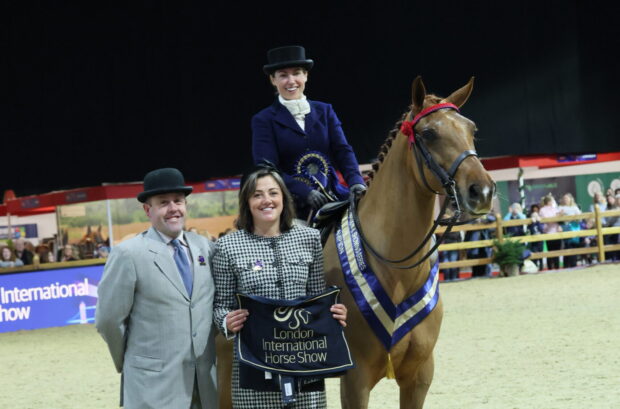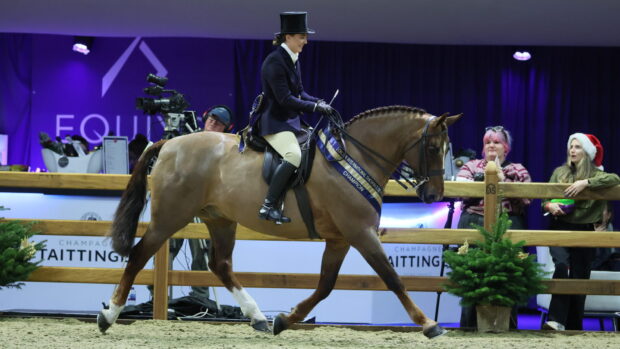Born and bred in the Welsh hills, this versatile little pony was originally used by farmers as ridden animals as well as in the pits and mines.
These ponies could easily carry up to twelve stone in total weight as they had a considerable amount of bone.
Their descendants are now considerably finer and can probably carry no more than eight stone by comparison and would not survive the conditions that their ancestors did.
The Section A is the smallest of the Welsh Pony breed sections (A, B, C and D) and must not exceed 12 hands exactly.
Section A ponies can be less than 11 hands but the vast majority stand between 11.1 hands and 11.3 hands. A smaller percentage of ponies make the full height of 12 hands, which makes ponies under 11 hands look even smaller in the show ring.
The Section A is predominantly used as the child’s first pony. The temperament of the breed is generally reliable, although there are always some exceptions.
Due to its natural barrel type appearance and its ability to carry variable amounts of weight it can carry smaller or larger children comfortably. Ideal for families with more than one child rider or those not wanting to keep changing ponies.
Usually the Section A is shown and ridden unshod owing to the hardiness of its feet and soles. It will certainly flick its toes more without steel shoes weighing them down.
The precise definition of the Welsh Pony and Cob Society rules of the Section A should be taken into account when purchasing a pony but there are many variations on the description. For example; the traditional “little ears” are much larger these days and the “bone” is predominantly lighter for ponies intended for the show ring.
The action of a Section A varies tremendously from in-hand ponies to children’s lead rein ponies and once again to open ridden ponies. The descriptions range from “daisy cutting” when they move like a show pony to “knee and shoulder action” when they move more like a hackney.
In general more knee action is expected and accepted in traditional Welsh Section A’s shown in-hand than in a lead rein pony. Children’s ponies should be less extravagant to give their young jockeys a smoother ride.
Welsh Pony and Cob Society’s breed description
- Hardy, spirited and pony like.
- Any colour except piebald and skewbald.
- Head, small, clean cut, well set on and tapering to the muzzle.
- Eyes bold, ears well placed, small and pointed, well up on the head, proportionally close.
- Nostrils prominent and open, jaws and throat clean and finely cut with ample room at the angle of the jaw.
- Neck lengthy, well carried and moderately lean in the case of mares but inclined to be cresty in the case of mature stallions.
- Shoulders long and sloping well back. Withers moderately fine, but not “knifey”. The humerus upright so that the foreleg is not set in under the body
- Forelegs Set square and true, and not tied in at the elbows. Long, strong forearm, well developed knee, short flat bone below knee, pasterns of proportionate slope and length, feet well-shaped and round, hoofs dense.
- Back muscular, strong and well coupled with a deep girth and well sprung ribs
- Hocks to be large, flat and clean with points prominent, to turn neither inwards nor outwards. The hind legs not to be too bent. The hock not to be set behind a line from the point of the quarter to the fetlock joint. Pasterns of proportionate slope and length. Feet well-shaped, hoofs dense.
- Action quick, free and straight from the shoulder, well away in front. Hocks well flexed with straight and powerful leverage well under the body.



